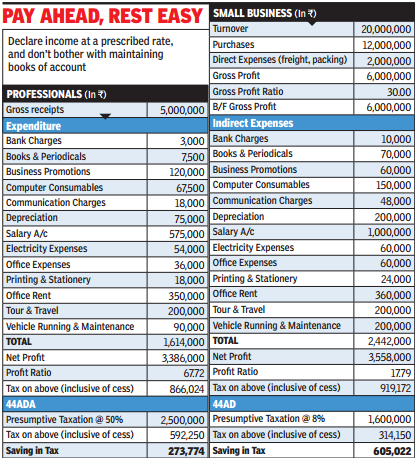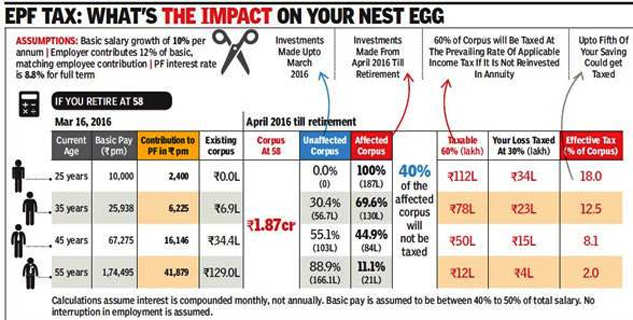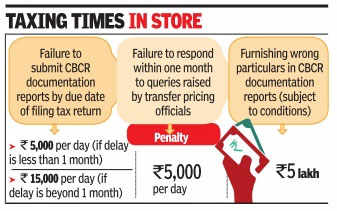NEW DELHI: One sure-shot way of making money whenever there is a change in government spending is by realigning your portfolio in favour of that theme, say experts.
The recent budget presented by Finance Minister Arun Jaitley had 'Bharat' written all over it. In other words, the budget was focused on rural and infrastructure spending. Instead of focusing more on capital expenditure, which was the focus in the 2015-16 Budget, this one appeared to prioritise rural sector.
Experts say investors should tweak portfolios towards the 'Bharat' theme or slightly increase exposure to stocks that cater to that theme. Going through the Budget fine print, the rural sector is the one that benefited most among all sectors, with a total budget allocation of Rs 87,765 crore.
"The growth potential in the rural segment is high. Investors should focus on stocks in sectors that are relatively more levered to rural markets, which will definitely show better signs of earnings growth going forward," Taher Badshah, Senior Vice President & Co-Head Equities, Motilal Oswal Asset Management, said in an interview with ET Now.
"Investors can look for select stocks in the FMCG space and NBFCs that actually cater to low-income housing. There are micro-lending companies which also cater to that segment of the market," he said.
The Finance Minister in his budget stuck to the path of fiscal prudence and maintained its fiscal deficit target at 3.9% for FY16 and 3.5% for FY17.
Going forward, the government is likely to focus on ensuring macro-economic stability, with a thrust on improving infrastructure and at the same times maintaining fiscal prudence.
The government in the Budget outlined a roadmap that would focus more on key areas like farm sector, rural development, infrastructure and employment generation, which would boost consumption.
"As far as rural discretionary consumption is concerned, the budget is a welcome change. The government has rightly recognised that after two years of weak monsoons the whole segment is under stress and they have done what they could to improve conditions out there," said BharatIyer, JP Morgan India in an interview with ET Now.
"I would not get carried away because let us face it at the end of the day the allocations have increased by about 8% to 10% but it is not more than that. And secondly, we still have to watch out for a couple of more variables such as monsoon, minimum support prices for Agri commodities etc," he added.
But, there is no doubt that the Budget did a good job in balancing many economic, social and political priorities that the FM had to juggle in these trying times, say experts.
Ahead of the Budget, the market was little nervous about higher capital gains taxes, which did not materialize. Both Sensex and Nifty50 fell by over 10% ahead of the event.
A lack of major negatives and credible numbers has led to massive short-covering and long positions being built in the equity markets, say experts who advise investors to tweak their portfolio towards sectors like cyclical, HFCs, two-wheeler makers, cement, FMCG etc.
"There's a significant increase in outlay for the rural sector. Combined with the implementation of the 7th Pay Commission recommendations and OROP, it means a good impact on consumption," said Mihir Vora- Director and Chief Investment Officer, Max Life Insurance.
"Sectors like cars, two-wheelers, other consumer durables, cement, FMCG, housing finance, microfinance and other NBFCs etc. could see better demand. The Budget is also overall positive for housing and real estate - there's increase in the tax incentives for affordable housing and simplifying the tax structure for REITs," he added.
Top five stocks to play the Bharat theme:
Analyst: Anand Tandon, Independent Analyst
M&M Financial: Iyer, who runs M&M Financial, is a fantastic manager. "Among many people I have met in the financial services business I would argue that his grasp on his business is among the best," said the analyst. You require a certain calibre of person to be running a bank who has to be able to make NPAs and so on.
That said, the company suffers unnecessarily because of the fact that they actually genuinely show their NPAs when they come out with one. Tandon is of the view that if you are really making a case for an uptick in terms of the rural economy then, without a doubt, this would be a company which will benefit hugely and will also have the largest beta in terms of recoveries in terms of their portfolio.
Mahindra Financial is going to be a bellwether stock in the rural economy.
Analyst: Sudip Bandyopadhyay, Market Expert
Jain Irrigation: This is one company which has got a great potential, especially after Budget. There were certain setbacks for the company in the past but I think the company has corrected the course quite a bit and remained focussed on the core business which is small and medium irrigation equipment and projects, said the analyst.
"With the budget brining back focus to rural economy and irrigation, I think this is one company which is going to benefit. Their valuation still continues to remain attractive so, with a one-year time the horizon, it is a great buy," he added.
Coromandel International:
Coromandel International is an excellent company, great management. "Unfortunately, the market was not conducive but with again focus coming back to rural India, I think this company has a great future," said the analyst.
"Also, remember that fertiliser subsidy rationalisation is on cards and there has been enough and more precursor to that. We are expecting current valuation if an investor buys, it is one-year time horizon, it should give excellent returns," he said.
Analyst: Daljeet Singh Kohli, HoR, IndiaNivesh
Hero MotoCorp:
Kohli said his team will be revising the rating on Hero MotoCorp to buy from hold rating and increase the target price from Rs 2600 to around Rs 3000 odd, said the analyst. The basic logic behind the move is that the kind of push that has been given on the rural side in the budget is going to yield results over a period of one to two years.
That is a long-term sustainable positive for Hero MotoCorp because that is where their major market lies. "Also, if we see in terms of valuation, the stock is still trading only at 16 times of FY 17," he said. This PE multiple actually had contracted from 18x to 16x because in him last two-three months, they did not show that kind of numbers but the numbers which have come for February were also good.
Most of the things are positive for Hero Motocorp and in comparison to Bajaj Auto, it is still better because Bajaj Auto is still facing headwinds in export.
Analyst: D K Aggarwal, Chairman and MD, SMC Investments and Advisors
Bharat Electronics:
The government's greater emphasis on 'Make in India' initiative in Defense sector provides a great opportunity for the Company to enhance its indigenization efforts and to address the opportunities in Indian defence sector.
Healthy order book and orders in the pipeline, capacity enhancements and the creation of new test facilities help the company in achieving the targeted growth and also would continue to drive the growth in the coming 4 to 5 years.




